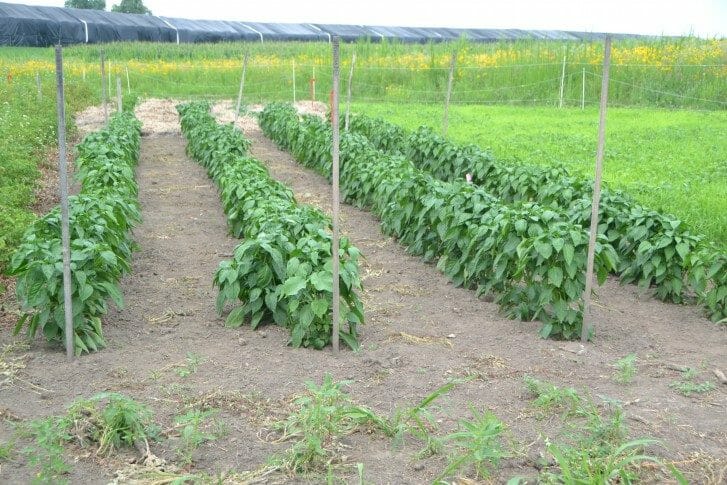Research Report: Bell Pepper Variety Trial: Olympus and Revolution
Peppers are familiar to consumers, continuously productive, and can wait patiently on the plant for harvest. Like all crops, proper soil condition, grower management, and weather impact pepper yield. Variety also plays a key role, and varietal performance varies with geography. In this trial, a group of farmers chose two varieties (Revolution and Olympus) to compare during 2015. Revolution and Olympus were selected because of positive farmer experience, the varietal similarities, and the availability of organic and untreated seed.
This project was conducted at five Iowa farms: Rick Hartmann (Small Potatoes Farm in Minburn), Susan Jutz (ZJ Farms in Solon), Tim Landgraf (One Step at a Time Gardens in Kanawha), Alice McGary (Mustard Seed Community Farm in Ames), and Mark Quee (Scattergood Farm at the Scattergood Friends School in West Branch).

Five farmers compared two bell pepper varieties, Olympus and Revolution, to determine which produces better in Iowa’s climate. Each farm planted four randomized pairs of research plots, each pair with 10-20 plants of each variety.
Key Findings
• Pepper yield was significantly different by farm, but treatment (variety) also had a significant effect on yield. Revolution yield was significantly higher than Olympus when all farms were analyzed together.
• Revolution produced more pounds and number of peppers per ft2 and per plant than Olympus at three of five farms. The remaining two farms saw no difference in yield between the varieties.
• Average plant yield of green bell peppers across all farms was 4.3 lb/plant for Revolution and 4.03 lb/plant for Olympus.
• Plant spacing was different by farm, but end-of-season yield for green bell peppers ranged from 1.82 – 2.66 lb/ft2.

